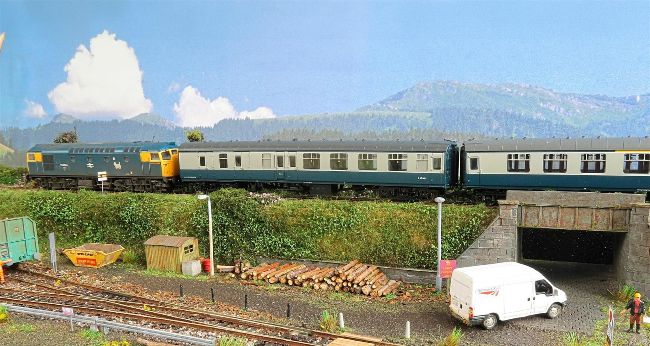EXPERT MODELLERS SHOW YOU HOW
HOW TO RECREATE A SNIPPET OF THE WEST HIGHLAND LINE
Peter Marriott shares one of his new projects, which aims to capture a tiny slice of this famous route.

PHOTOGRAPHY: PETER MARRIOTT
Scotland’s West Highland Railway is a line that offers excellent modelling potential, especially for those lucky enough to have plenty of room in which to model the spectacular scenery and distinctive lineside structures. However, it’s also a suitable subject for modellers with precious little space.
Opening in 1894, the West Highland line was built to link Glasgow with the busy ports of Oban and Mallaig. Leaving the North Clyde route at Craigendoran, near Helensburgh, the route heads into the Western Highlands, alongside Gare Loch and Loch Lomond before the line diverges at the famous junction at Crianlarich, where the line crosses the erstwhile Callander-Oban line.
Oban trains turn west and head via Loch Awe and Connel Ferry, while Mallaig trains head north across the wilds of Rannoch Moor before turning west and heading to Fort William, where Mallaig trains must reverse.
The route traverses some of the most spectacular scenery in the UK and, during the BR steam era, ex-LNER Class K1s, K2s, K4s and B1s were the staple motive power, followed by ex-LMS ‘Black Fives’. BR steam operations ceased in the mid-1960s, with Type 1 and Type 2 Bo Bo diesels taking over (Classes 20, 21/29, 24, 25, 26 and 27), with the Type 3 Class 37s gaining dominance from the late 1970s on passenger, sleeper and freight services. The arrival of the ‘Sprinter’ diesel multiple units (DMUs) in 1989 saw an end to loco-hauled passenger trains, with the Class 156s ruling the roost for the past 30-odd years, latterly boosted by the addition of Class 153s modified to carry cycles and luggage.
Two-car Class 104 DMUs operated shuttle services between Oban and Crianlarich in the mid-1980s, with a special livery applied that gave rise to the nickname of ‘Mexican Bean’ (I look forward to the arrival of Heljan’s ‘OO’ model later this year).